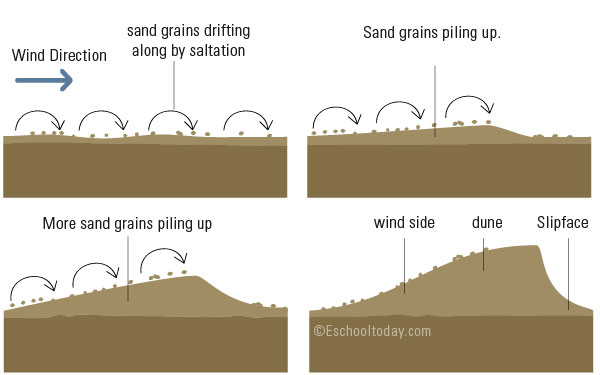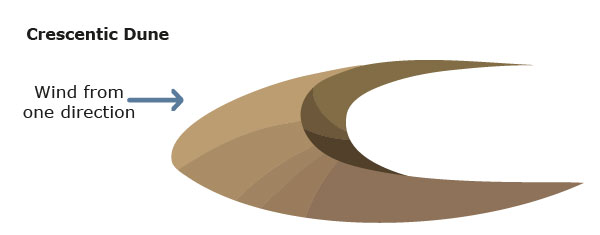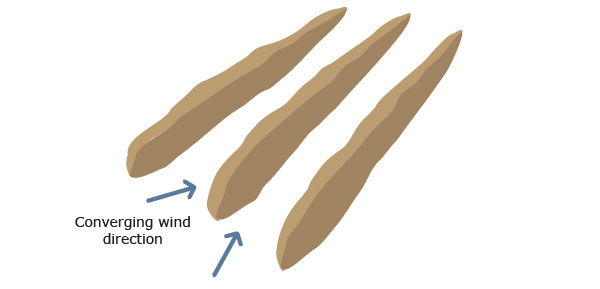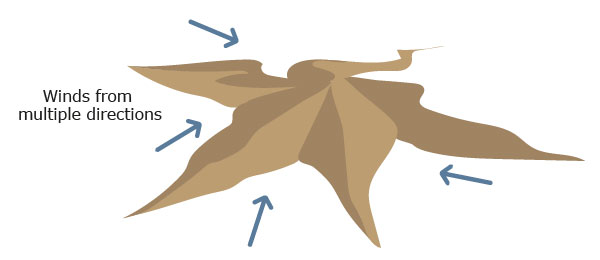- Landforms
What is a sand dune?
A sand dune is a mound of sand usually formed in windy areas with very little or no vegetation and with lots of sand. They are created from drifting sand grains in a process called saltation. As winds blow, the sand grains bounce on the surface (wind side) until they reach the top of the mound, then they fall on the slip face side.

Sand dunes have a wind side and a slip face side. They come in many small sizes and shapes. Many sand dunes in one location are called a sand field or a dune field. An even larger area of dunes is called an Erg.
Some types of dunes include the following:
Crescentic dunes:

These are the most common types, in the shape of a crescent. The gently sloping side (wind side) faces the wind and the slip-face side faces the opposite direction. They are also called barchans or transverse dunes.
Linear dunes:
 These are in long narrow lines and may also look wiggly. They form when the wind blows in opposite directions.
These are in long narrow lines and may also look wiggly. They form when the wind blows in opposite directions.
Star dunes:

These look like swirling stars and they form when the wind blows in multiple directions.
Dome dunes:
These may not be as striking as the others but be seen on sand beaches. They are like circular or oval mounds of sand and do not have a slip-face side. They form when the wind just piles up sand, usually around an object or vegetation as it traps the airborne sand.
Parabolic dunes:
These are like crescent dunes, but this time, the wind direction is towards the slip-face side. This is so because if the wind blows off one side of a sand mound, it will create a hollow there. This is also called a blowout dune. These dunes are very mobile.
